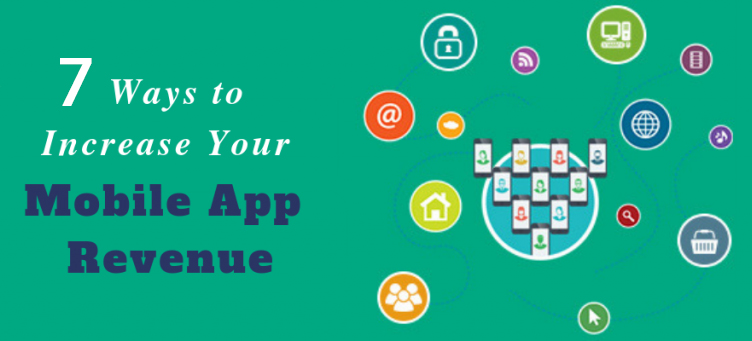How can App Developers Maximize their Revenue?

There has been a fundamental shift in the way users compelling content today. Mobile users have moderately moved away from utilizing their mobile browsers to focus on a wide range of apps across numerous verticals. This empathy toward in-app has changed the app developers’ viewpoint toward different monetization strategies. App developers who continue with the evolution of the best practices will undoubtedly tap into the fastest-growing revenue stream in the future.
The latest projection by eMarketer states that mobile ad spend is set to exceed all traditional media in 2020, indicating constant growth in the foreseeable future. For app developers, this means that great opportunities are opening up for you to monetize your apps. At the same time, mobile app developers need to combine many skills to suit the needs of their customers.
Tips To Maximize Your App Revenue
There are different ways of earning apps revenue that are selling ad spaces, providing premium versions, and monthly or yearly subscriptions. Regardless of your monetizing tactic, you will require users to make money for your app. Let’s have a look at some of the things to acknowledge for maximizing profit.
1)Build a Scalable App
Every developer needs to design more room for the growth of their app. The scaling of an app not only fixed the problems with the app but also increasing the high chance of generating a high ROI.
Scaling of the app allows developers to handle several user growths and also more dependable to handle larger marketing campaigns.2)Develop An App Monetization Strategy
Choosing an app monetization strategy is deciding how you are willing to make money from your application. While there are a lot of monetizing strategies to choose from, ensure to use the one that best fits your app and does not trouble your users.
Following are the most extensive monetizing strategies:
Paid Apps – apps that require one-time payment to download.
In-app Purchases - apps that are normally free, but include additional features that are available for purchase.
In-app Ads – Apps that display ads to earn money
Freemium – This is quite a popular strategy in which downloading the app is free but to use additional features of the premium app, you need to pay a subscription fee or one-time payment.
Subscription – To use the app, users need to pay a monthly or yearly fee.
Increasing the number of developers prefer monetizing with in-app purchases and some opt for both in-app ads and in-app purchases. You should select your monetizing model depending upon your App’s functionality. With the right scheme in place, you will surely grow your revenue and App’s value.
3) Use Social Media For App Promotion
Social media is the most powerful platform to promote apps and also engage with your potential users and audience in a significant way. At the point When you focus on growing a powerful social media plan it outcomes in a strong digital presence through network sharing and recommendations.
Identifying the benefits of social media platforms is tremendously important and it also develops your strategy according to each one of them. There are various ways of doing this :
On social media, you can use paid ads.
Through the help of Influencer marketing, you present your app to an already engaged audience and receptive user base.
You can look for reviews and ratings on social media, ask for feedback from people to identify user’s needs.
4) Deploy cross-promotion
Another innovative way of promoting your application is cross-platform promotion; it empowers you to promote your application with another generally existing application.
Suppose you already have an application with a considerable client base, you can exploit the current user base of that application to advertise your new application and grow revenue and recognition. But You need to do this insightfully because both of the applications probably won't have a similar user base which is the reason you should segment the user base and just use the segment that fits the application you are attempting to develop. The app analytics platform will empower you to comprehend your user's inclinations and specialty a superior advertisement experience.
5)Focus on App Store Optimization
The process of optimizing the apps for Google PlayStore and Apple App Store is known as App Store Optimization(ASO). This is done to increase exposure and downloads of your app.
Each user checks at all the components of the application's page on the application store before choosing to download the application. Your app's icon, description, screenshots, videos, and reviews impact your number of downloads. Focusing on ASO will assist you with increase revenue.
6)User retention focus
The retention rate tells you the number of users who get back to your app in any given period. It is a very crucial matrice to understand the feasibility of your app. Various publishers evaluate user retention even before they release the app.
If your app has a low retention rate, it is more likely to fail. On the other hand, the more the number of users that keep your app and return to it, the more are your chances of generating revenue through in-app purchases or by in-app ads. Developers can use various app analytics tools like Firebase to calculate the retention rate for a set period.
Final words
Making a profitable app is not an easy thing, with the rising competition and oversaturation in many niches in the mobile app market. Considering the above recommendations will help you to reach your audience and increase your ROI.
We hope the above article helps developers to craft a sound strategy to maximize their revenue and increase the user base.